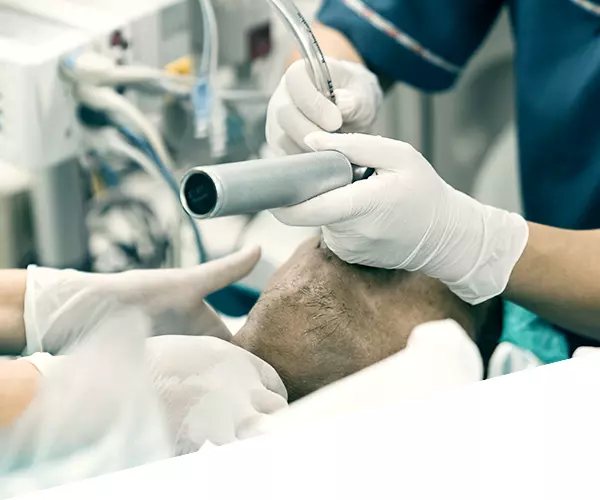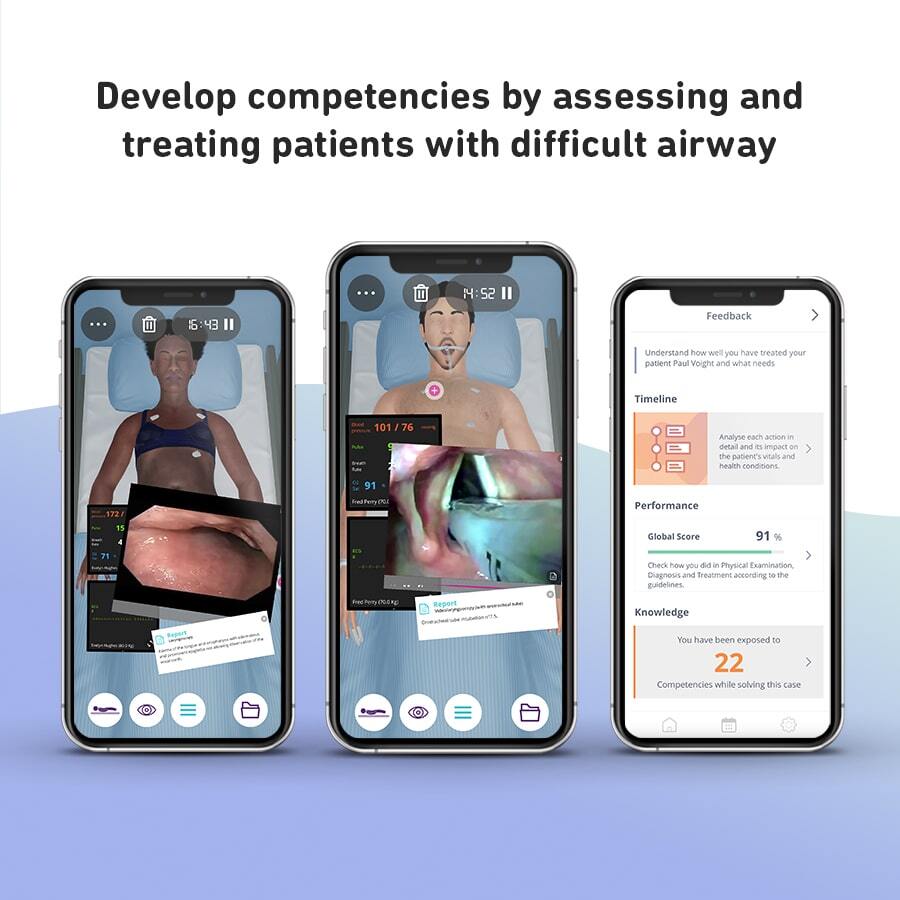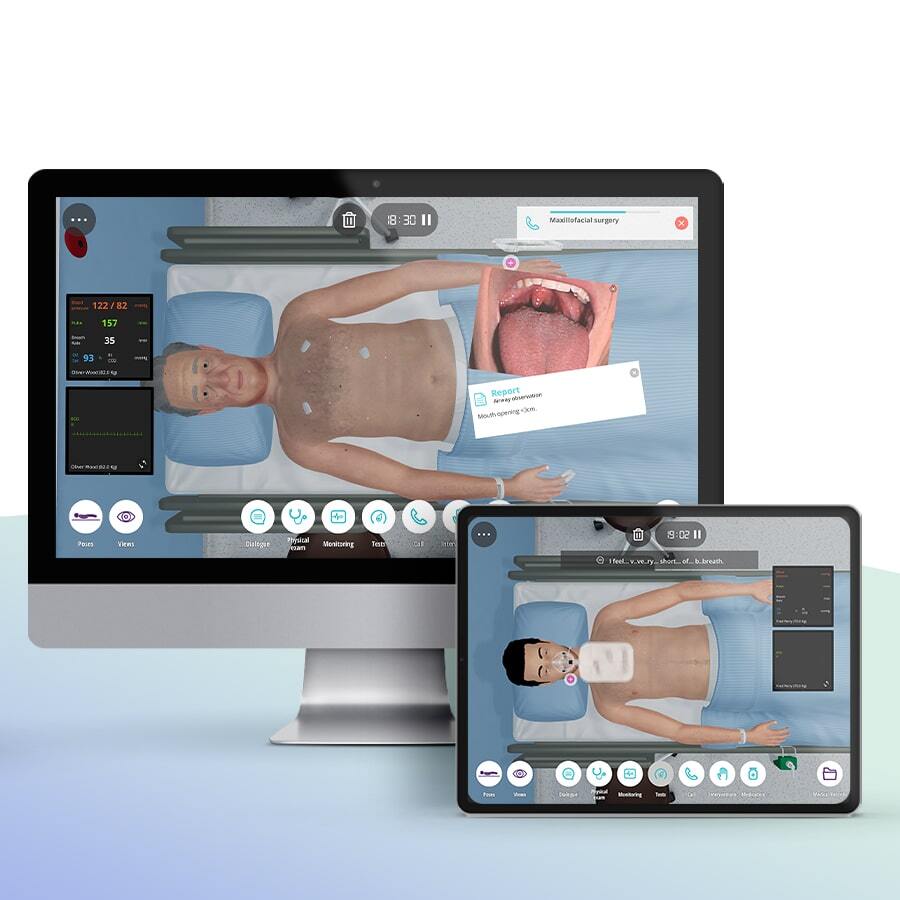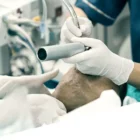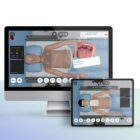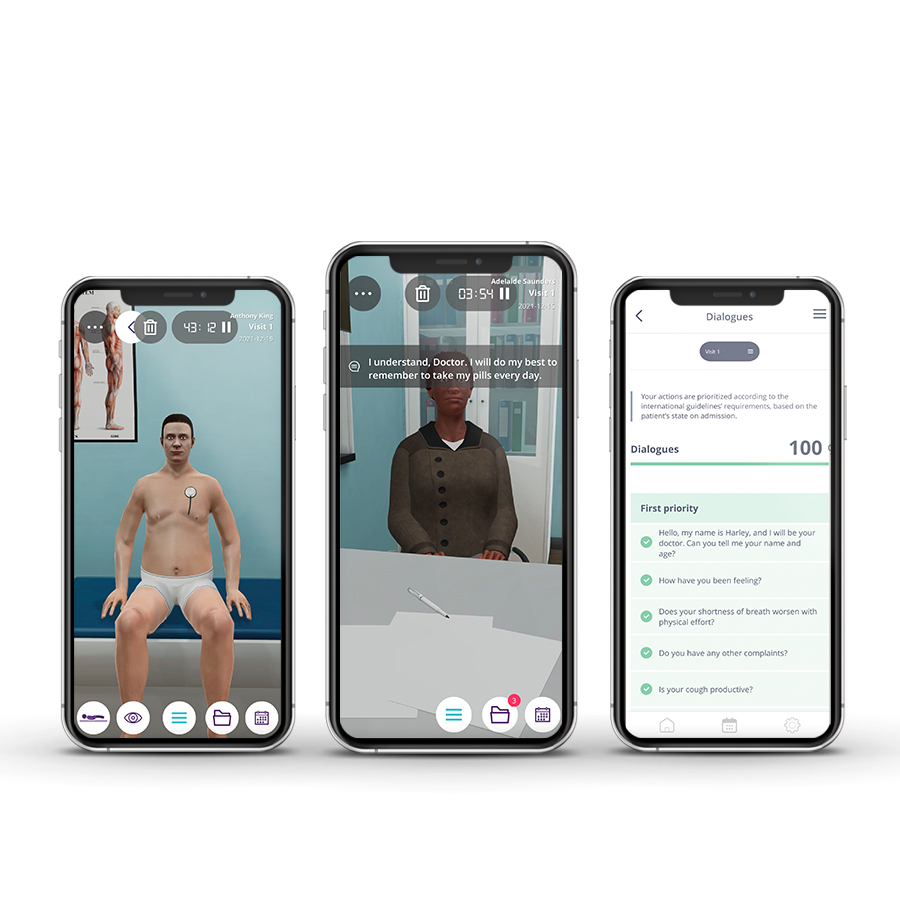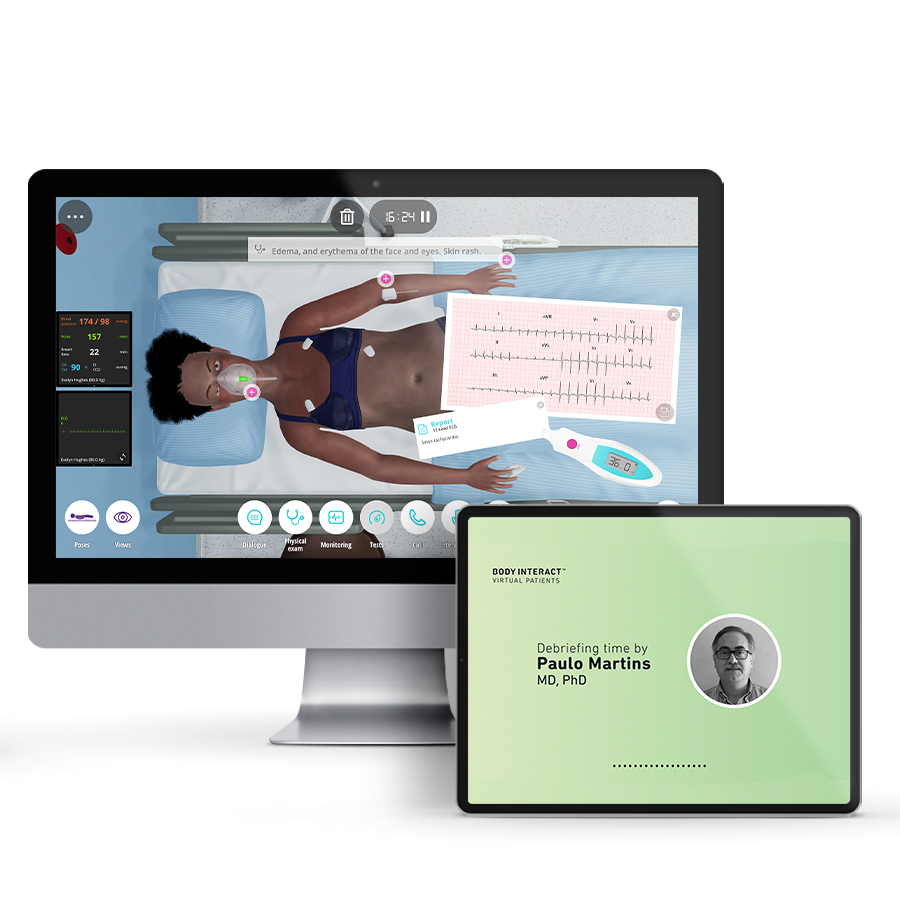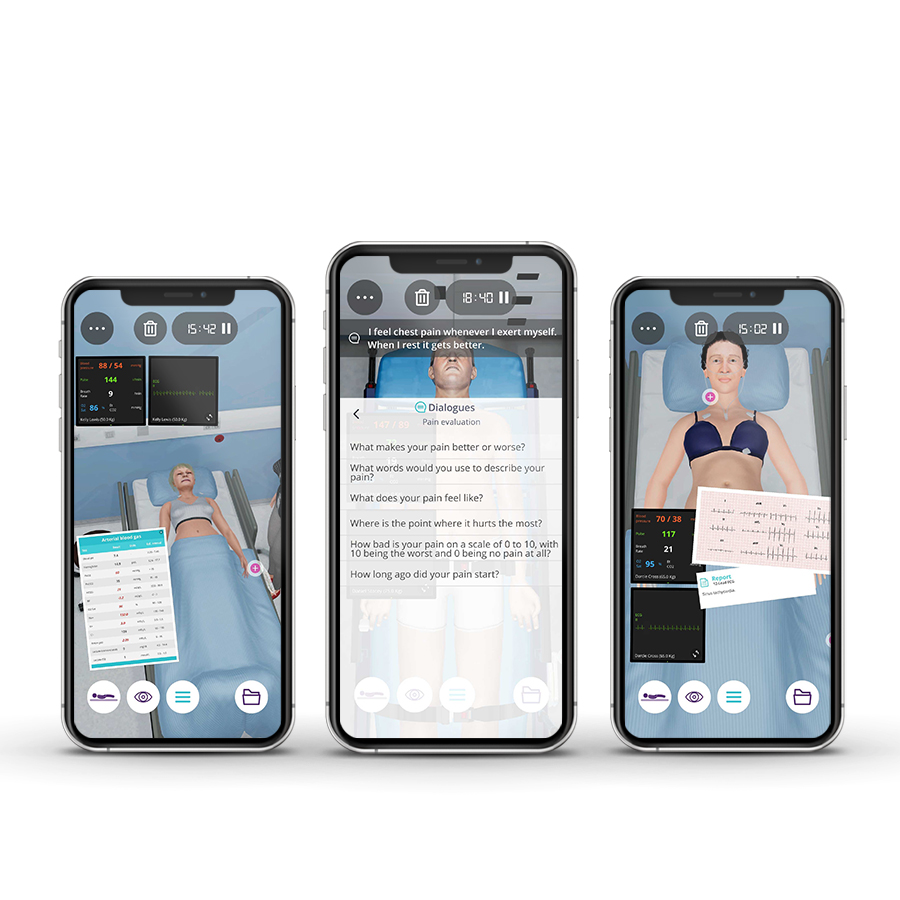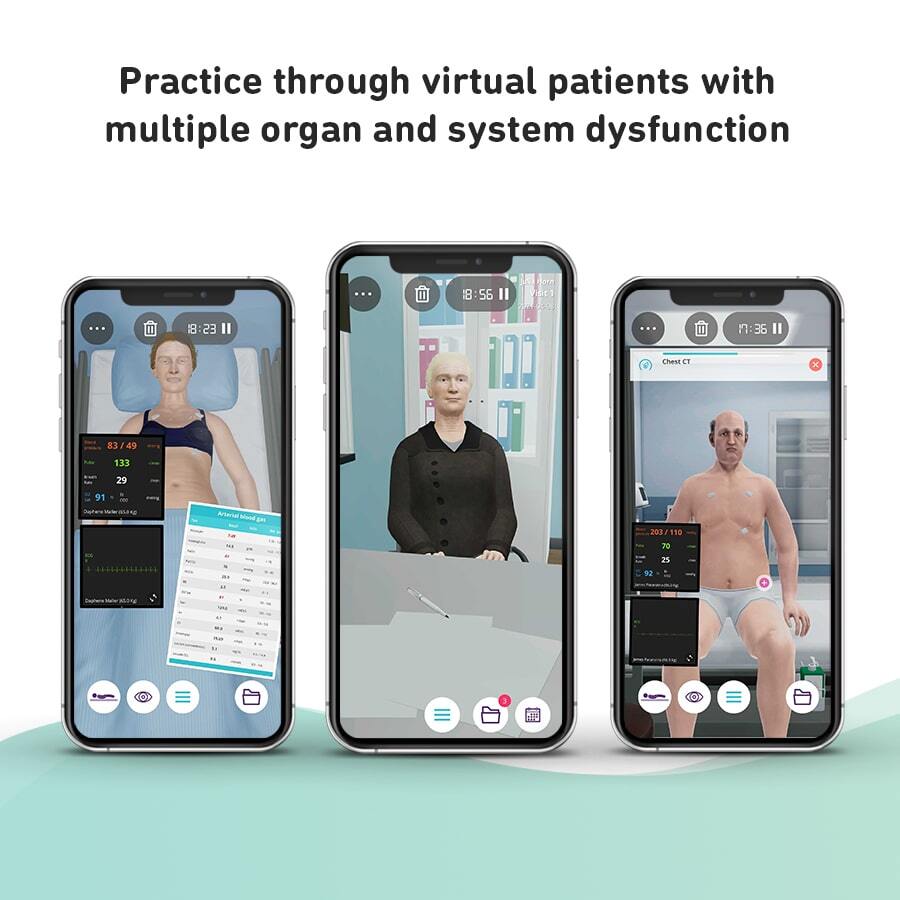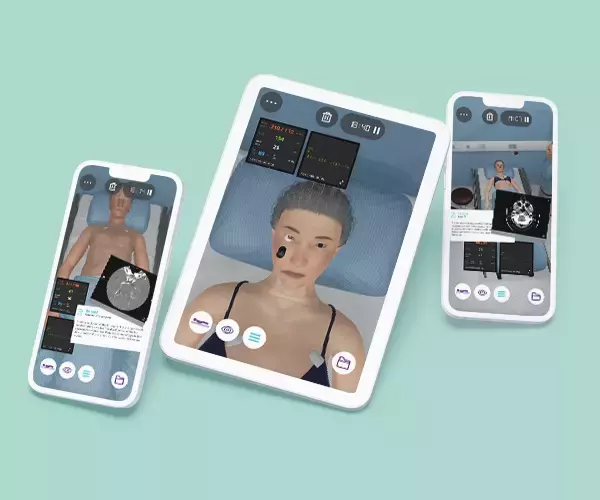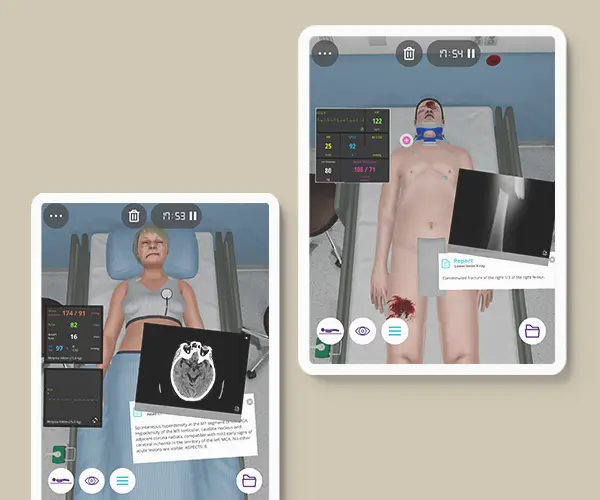Description
Course type: Online; Self-Paced
Specialty: Specialty: Allergy / Immunology / Intensive Medicine
Language: English, Portuguese
Resources: Debriefing Videos
Level: Intermediate / Advanced
Target: Target: Physicians and Advanced Practice Nurses
Modules: 5
Durations: 2 months
Time Effort: Up to 110 minutes per module
Certificate: Yes
Course Description
A difficult airway is defined based on a clinical situation in which a specialist has difficulty managing upper airway ventilation with a face mask or tracheal intubation, or both. It involves a complex interaction between patient factors, the clinic, the environment, and the skills of the clinician.
Current recommendations point to the need for early airway assessment. This evaluation should be based on the patient’s history and physical examination, looking for physical features that may indicate the presence of a difficult airway. Additional evaluation may be indicated for some patients to characterize the likelihood or nature of the expected airway difficulty.
The Difficult Airway Course allows you to develop skills in planning and managing a difficult airway, as well as putting into practice techniques of action.
Course Overview
- 5 Modules
• 10 virtual patient cases of an intermediate level of complexity - Average Time to practice (per module):
• Clinical Scenario: 20 minutes per attempt (3 attempts: 60 minutes)
• Final attempt (if applicable): 20 minutes
• Multiple Choice Question: 5 minutes
• Feedback Area: 10 minutes
• Learning Objectives and Scientific References: 10 minutes
• Debriefing Video: 10 minutes - Online, Self-paced
• You have up to 2 months to complete the 5 modules at your own pace. The course can be accessed through Body Interact at any time. - Certificate of Completion
• After completing the course, you will receive a Certificate of Completion that can be added to your CV or Resume.
Learning Objectives
• Anticipate difficult airway using LEMON criteria/score
• Characterize difficult airway due to Mallampati III
• Identify main pathologies that could potentially lead to a difficult airway
• Value airway obstruction by an inflammatory process with wheezing and with bronchospasm on pulmonary auscultation
• Recognize difficult airway and intubate using the video-laryngoscopy technique to protect the airway
• Develop competencies in intubation using the video-laryngoscopy technique
• Perform an appropriate diagnosis and treatment of angioedema, according to current guidelines
• Anticipating difficulties in approaching the airway in a patient with laryngeal edema of an allergic nature
• Differentiate between an acute attack of hereditary angioedema and allergic angioedema
• Outline a practice plan for managing a patient who presents acute laryngeal angioedema symptoms
• Summarize signs and symptoms of Angioedema of unknown etiology in order to increase awareness and understanding
• Identify Ludwig Angina and treat the condition
Clinical Competencies
Safety
• Collect patients’ clinical information
• Establish drug dosing for common medications
Airway and Breathing
• Basic airway management
• Lung examination (percuss, fremitus, auscultation and qualities of air sound, lobar locations)
• Thorax examination (shape, movement, diameter, ribs and diaphragm)
• Respiratory rate and rhythm assessment and interpretation
• O2 administration
• Oximetry interpretation
• Placement of oral airway
Circulation
• Assess and interpret blood pressure (various sites and body positions)
• Assess and interpret pulse (rate, rhythm and volume)
• Detect heart murmurs
• Identify S1 heart sounds (tricuspid, mitral)
• Identify S2 heart sounds (pulmonary, aortic)
• Assess and interpret vital signs
• Catheter management
• Interpret capillary refill time
• Mental status assessment (level of arousal, response to auditory stimuli, to visual stimuli, noxious stimuli)
Disability
• Blood sugar measurement and interpretation
• Mental status examination
Exposure
• Arterial blood gas interpretation
• Assess and interpret temperature
• Blood culture interpretation
• Chest x-ray interpretation
• Computed tomography (CT) or Magnetic resonance imaging (MRI) result interpretation
• Electrocardiogram interpretation
• Fiberoptic examination of nasopharynx
• Hematocrit interpretation
• Lesion qualities assessment (petechiae, urticaria, jaundice, vesicles, etc)
• Refer to healthcare/ medical specialties
• Sputum analysis interpretation
Module 1 – Young male patient with lip and tongue swelling
Context: The swelling of the deeper layers of the skin can affect any part of the body, but usually affects the eyes, lips, tongue, hand, and feet. The appearance of this edema has four main causes: allergic reaction; drug-induced; hereditary or no known cause, which may be related to anxiety or minor stress infections – idiopathic. Allergic or idiopathic are usually treated the same, using a combination of antihistamines and corticosteroids to help relieve the swelling.
Virtual Scenario: Tobias Ingram presents to the Emergency Room with acute lip swelling. He is an otherwise healthy college student with no prior medical history.
Module 2 – Respiratory difficulty after ate a little cocktail
Context: An allergic reaction can cause edema, which leads to airway obstruction. Edema occurs in the loose submucosal layer of the connective tissue, which is most developed on the lingual surface of the epiglottis, in the criburonal and gangled folds, in the area of the scaphoid cartilage, and in the sub-basement space. Some of this fabric is contained in the folds of the vestibule.
Virtual Scenario: Ms. Hughes was celebrating a friend’s birthday at a dinner party when suddenly she started with respiratory difficulty and wheezing becoming progressively more severe. Her friend called for an ambulance referring that she is allergic to seafood, and ate a little cocktail, not knowing that it has seafood.
Module 3 – Anticipation of difficult airway
Context: Airway assessment is a key part of a patient assessment. It helps to predict a difficult airway and can help reduce the incidence of difficult or unsuccessful intubation. The LEMON tool can be used in different clinical environments and helps to predict the difficulty of intubation.
Virtual Scenario: Mr. Perry has developed a cough with expectoration and fever for over a week. Today was brought to the emergency department after an increase in shortness of breath, fatigue, and collapse at home.
Module 4 – A recent tooth abscess
Context: Dental infections, as well as parapharyngeal abscess, mandibular fracture, cut or perforation inside the mouth, or submandibular salivary stones can be causes of a type of severe cellulitis that specifically involves the submandibular, submental and sublingual spaces. As the condition worsens, the airway may be compromised as a result of the hardening of the spaces on either side of the tongue, requiring a rapid approach.
Virtual Scenario: Mr. Wood had a recent tooth abscess and was prescribed antibiotics for 15 days. He has a history of progressive difficulty in swallowing, odynophagia, dysphonia, extraoral swelling, and pain.
Module 5 – A few days with odynophagia
Context: An untreated pharyngitis or tonsillitis, can lead to an abscess caused by a bacterial infection that usually involves a purulent pocket-forming near one of the tonsils. This type of infection can lead to potentially serious complications such as airway obstruction, aspiration, or extension of the infection into deep tissues of the neck.
Virtual Scenario: Mr. Voight usually has pharyngitis regularly. Today he comes to the emergency department with shortness of breath, discomfort, odynophagia, and fever, which started a few days ago.
Authors and Speakers
With a multidisciplinary group of international clinical reviewers, Body Interact ensures a high standard of accuracy, diversity, and impact of its course.
Paulo Martins
MD, PhD
Expert in Intensive Care
Faculty of Medicine, University of Coimbra, Portugal
Scientific References
- Otani IM, Christiansen SC, Busse P, et al. Emergency Department Management of Hereditary Angioedema Attacks: Patient Perspectives. The Journal of Allergy and Clinical Immunology: In Practice. 2017;5(1):128-134.e4.
- Zuraw BL, Banerji A, Bernstein JA, et al. US Hereditary Angioedema Association Medical Advisory Board 2013 Recommendations for the Management of Hereditary Angioedema Due to C1 Inhibitor Deficiency. The Journal of Allergy and Clinical Immunology: In Practice. 2013;1(5):458-467.
- Sakles JC, Douglas MJK, Hypes CD, et al. Management of Patients with Predicted Difficult Airways in an Academic Emergency Department. J Emerg Med 2017; 53:163.
- Brown CA 3rd, Bair AE, Pallin DJ, et al. Techniques, success, and adverse events of emergency department adult intubations. Ann Emerg Med 2015; 65:363.
- Cicardi M, Aberer W, Banerji A, et al. Classification, diagnosis, and approach to treatment for angioedema: consensus report from the Hereditary Angioedema International Working Group. Allergy 2014; 69:602.
- Higgs A, McGrath BA, Goddard C, et al. Guidelines for the management of tracheal intubation in critically ill adults. Br J Anaesth. 2018;120(2):323-352.
- Bridwell R, Gottlieb M, Koyfman A, Long B. Diagnosis and management of Ludwig’s angina: An evidence-based review. Am J Emerg Med. 2021;41:1-5.
- Parker E, Mortimore G. Ludwig’s angina: a multidisciplinary concern. Br J Nurs. 2019;28(9):547-551.
- Vallée M, Gaborit B, Meyer J, et al. Ludwig’s angina: A diagnostic and surgical priority. Int J Infect Dis. 2020;93:160-162.
- Helfenberger L, et al. Risk factors for peritonsillar abscess in streptococcus A-negative tonsillitis: a case control study.2021;151.
- Sandefur B, et al. Clinical Features and Outcomes Associated with Angioedema in the Emergency Department West.J Emerg Med. 2019;20(5):760-769.

